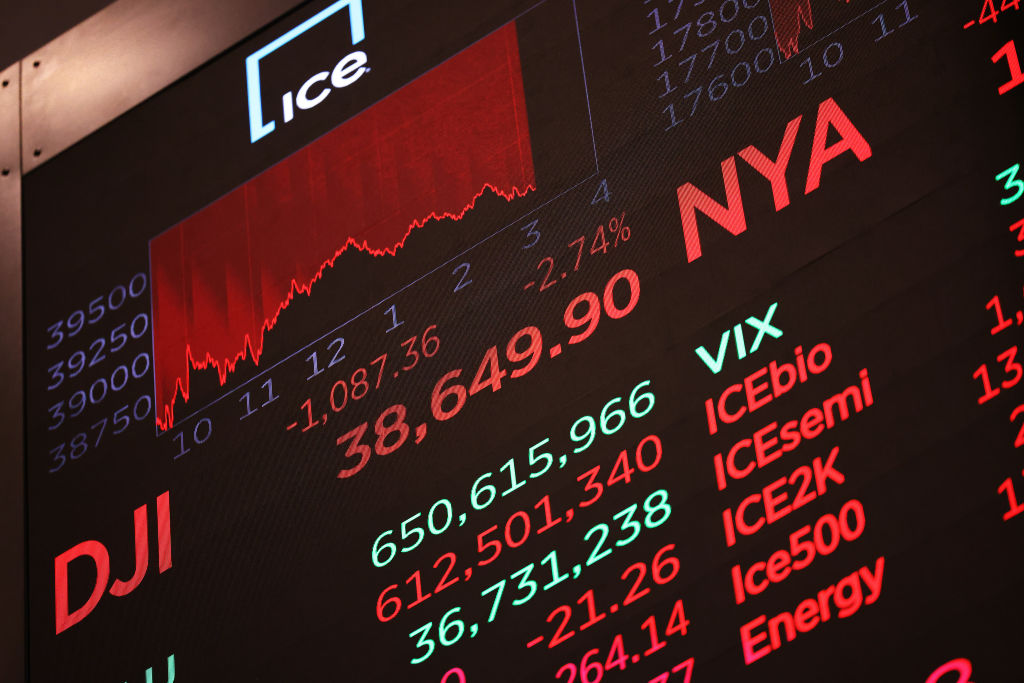Is The Market Sell-Off A ’Hiccup’ Or ’The Big One’?
As a commodities trader I rarely dabble in equities, other than the ole 401k and IRA. But it behooves traders in any market to pay attention to activity in the Dow Jones Industrial Average (DJIA), S&P 500 Index (SPX) and NASDAQ Composite Index (Nasdaq) as they can be a harbinger of demand for energy and ...

As a commodities trader I rarely dabble in equities, other than the ole 401k and IRA. But it behooves traders in any market to pay attention to activity in the Dow Jones Industrial Average (DJIA), S&P 500 Index (SPX) and NASDAQ Composite Index (Nasdaq) as they can be a harbinger of demand for energy and raw materials down the road. So, as of the close of trading today, the DJIA is down over 1,000 points, the SPX down 160, two-and-half and 3% declines respectively. For the DJIA, this represents a roughly 6% decline from last month’s all-time high and 8 1/2% for the SPX. The tech-heavy Nasdaq is down almost 3 1/2% today, compounding a 13% retracement from its all-time high, which is more interesting, and concerning.
So what’s happening? Several factors seem to be at play here. Some fundamental, some international, some even psychological.
First the fundamentals. The Nasdaq has been propelled to record highs recently on big bets in AI stocks. But after earnings from tech goliaths Amazon, Microsoft, Tesla, Alphabet and Apple disappointed (Meta being a bright exception, although it’s not helping its share price), the luster seems to have faded, at least in the short term. And Intel, once a tech giant now playing catchup in the AI game, had its worst day in 50 years on Friday and is down another 6 1/4% today — it is down an astounding 42% on the year.
The broad sell-off was more or less triggered on Friday when the monthly jobs report was weaker than expected, adding only 114,000 new jobs when 175,000 was the expectation. Unemployment also grew, climbing from 4.1% to 4.3%, igniting fears that the economy may be slowing down. This, of course, is bearish in any environment let alone one already teetering under the weight of disappointing earnings when markets are at lifetime highs.
This turns traders’ attention to The Fed, which many now say has been too slow to lower rates (which it steadily raised in response to 40-year-high inflation levels). High rates for too long stifle an economy’s ability to expand as the cost of money remains high. In response, traders did what they always do — they dumped their stocks and moved their money into the safe haven of bonds, just as I explain in my latest book. They anticipate The Fed will have to be more aggressive in its future rate cuts to play catch-up with a cooling economy.
One more factor to consider. The Nikkei Stock Average Volatility Index (Nikkei 225 VI) has rocketed to the highest levels since first being tracked in 2001. This is a direct result of dumping Japanese stocks due to the rising yen against the dollar. Why does this matter? Many trades in the market (too detailed for this format) are made with the assumption of cheap yen borrowing. This has been upended in recent days as the Bank of Japan raised rates last week. This, combined with belief that the U.S. central bank must move to cut rates quickly, has sent the dollar-to-yen spread surging. Japan, the fourth largest economy in the world, is in a bind.
Raise rates to curb inflation and the cost of money (in this case the yen) rises, causing the markets to tumble. Lower rates to stimulate the economy and the currency is devalued and thus triggers inflation. Rinse and repeat. Oh, to be a central banker in Tokyo today. No thanks!
To recap: earnings bad, economic data bad, Fed action too late, Japan bad. And here we are.
There is also a psychological factor in all this as markets are, in the end, human constructs. All this uncertainty as to Fed action and slowing economic growth has led to increased volatility in the equities markets as reflected in the CBOE Market Volatility Index (VIX). As of this writing, this number has spiked up just under a whopping 39% — levels not seen since May 2020. By way of comparison, though, its current level of 32.5 is still half what the VIX was in March 2020. But when you consider it is still almost double what it was just three trading sessions ago, this is worth watching. Investors — not to be confused with traders — loathe uncertainty. And when they feel their spidey senses tingling, as volatility is just a measure of uncertainty they tend to initiate what is known as a “flight to quality.” Dumping stocks and buying bond futures in anticipation of The Fed trying to salvage a cooling economy by making dollars, thus investment capital, cheaper through interest rate cuts. A bond future’s value is inverse to interest rates. As such, rates go down, bond futures go up and yields go down.
WATCH THE TRAILER FOR ‘AM I RACIST?’ — A MATT WALSH COMEDY ON DEI
As you can see, emotion is often a driver of these sell-offs. One which has put the Nasdaq in official “correction” territory. Having been in the markets for over three decades, one can see this same pattern repeating itself again and again. Investors move like a shoal of fish, and once the mass of dealers changes course, they tend to run in that direction for a while.
The most important question an investor must ask is this: Is this the beginning of a prolonged and painful sell-off in equities (and concurrent rally in bonds)? Or is this a buying opportunity? And if I knew the answer to either of those questions, I’d be writing this from my destroyer-sized yacht in Monte Carlo rather than a little trading office in New Jersey. But I do know that, in markets especially, history repeats itself. Because people are the same, even if the manner in which they transact has changed due to technology.
So, we shall see what today, which is really a continuation of the rumblings The Street began to experience in its gut last week, portends.
For what it’s worth, the crash of 1987, one of the greatest buying opportunities in a generation, saw the DJIA plummet 22% in one day, as opposed to 2.6% today. It just feels more dramatic because, obviously, 2.6% of 40,000 is nominally bigger than 22% of 2,300. Therefore, much of the sturm und drang could be emotions taking place of analysis.
Whether this is a hiccup or the big one remains to be seen. Only time will tell.
* * *
Brad Schaeffer is a commodities trader, columnist, and author of two acclaimed novels. Along with Daily Wire, his articles have appeared in the Wall Street Journal, New York Daily News, New York Post, National Review, The Federalist, The Hill and other media outlets. His newest book, LIFE IN THE PITS: My Time as a Trader on the Rough-and-Tumble Exchange Floors, is a fun and informative memoir of his time as a floor trader in Chicago and New York. You can also find more of Brad’s articles on Substack.
The views expressed in this piece are those of the author and do not necessarily represent those of The Daily Wire.
UPDATE: The numbers and percentages in this article have been updated to reflect market value at close of business on Monday, August 5, 2024.
Originally Published at Daily Wire, World Net Daily, or The Blaze
What's Your Reaction?
































































































